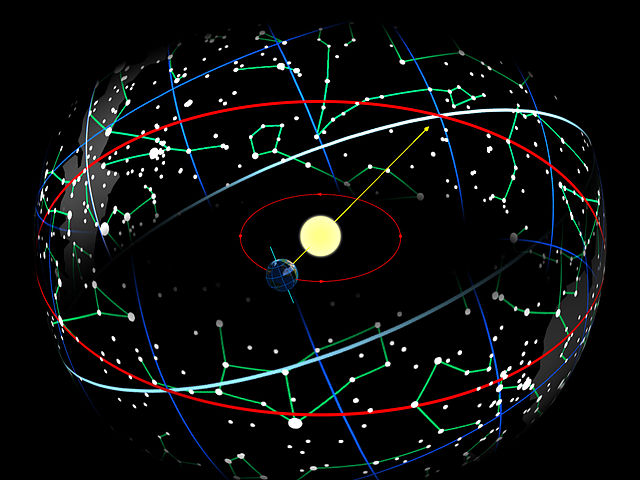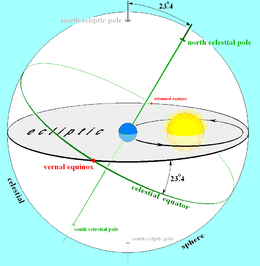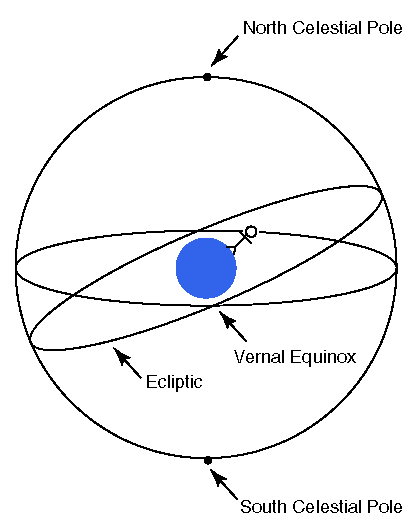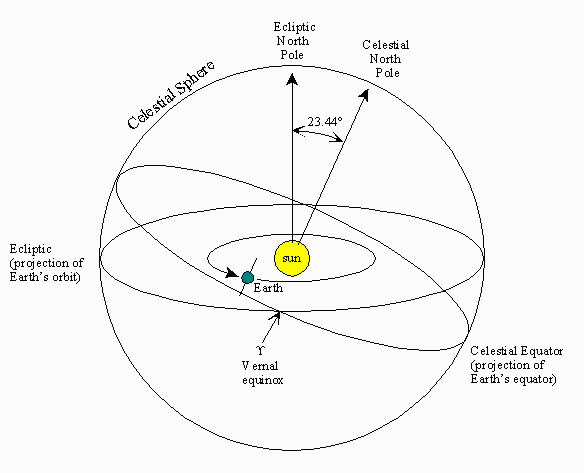
noun
- Astronomy.
- the great circle formed by the intersection of the plane of the earth’s orbit with the celestial sphere; the apparent annual path of the sun in the heavens.
- an analogous great circle on a terrestrial globe.
- Astrology. the great circle of the ecliptic, along which are located the 12 houses and signs of the zodiac.
adjective Also e·clip·ti·cal.
- pertaining to an eclipse.
- pertaining to the ecliptic.
noun
- astronomy
- the great circle on the celestial sphere representing the apparent annual path of the sun relative to the stars. It is inclined at 23.45° to the celestial equator. The poles of the ecliptic lie on the celestial sphere due north and south of the plane of the ecliptic
- (as modifier)the ecliptic plane
- an equivalent great circle, opposite points of which pass through the Tropics of Cancer and Capricorn, on the terrestrial globe
adjective
- of or relating to an eclipse
late 14c., “the circle in the sky followed by the Sun,” from Medieval Latin ecliptica, from Late Latin (linea) ecliptica, from Greek ekliptikos “of an eclipse” (see eclipse (n.)). So called because eclipses happen only when the Moon is near the line. Related: Ecliptical.
- The great circle on the celestial sphere that represents the Sun’s apparent path among the background stars in one year. The northernmost point this path reaches on the celestial sphere is the Tropic of Cancer, its southernmost point is the Tropic of Capricorn, and it crosses the celestial equator at the points of vernal and autumnal equinox.♦ The plane of the ecliptic is the imaginary plane that intersects the celestial sphere along the ecliptic, and the north and south ecliptic poles are the points where a perpendicular line through the middle of this plane intersect the sphere. The plane of the ecliptic corresponds to the plane in which the Earth orbits the Sun. If the Earth’s axis were not tilted, the ecliptic would be identical to the celestial equator and the ecliptic poles identical to the celestial poles. In this case, the Sun’s path would not move northward or southward from the equator during the year. As it is, the plane of the celestial equator is tilted 23.45° to the plane of the ecliptic, corresponding to the tilt of the Earth’s axis with respect to its orbital plane, giving the Sun its apparent northward and southward movement among the background stars. See illustration at celestial sphere.
 Liberal Dictionary English Dictionary
Liberal Dictionary English Dictionary




